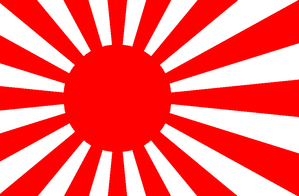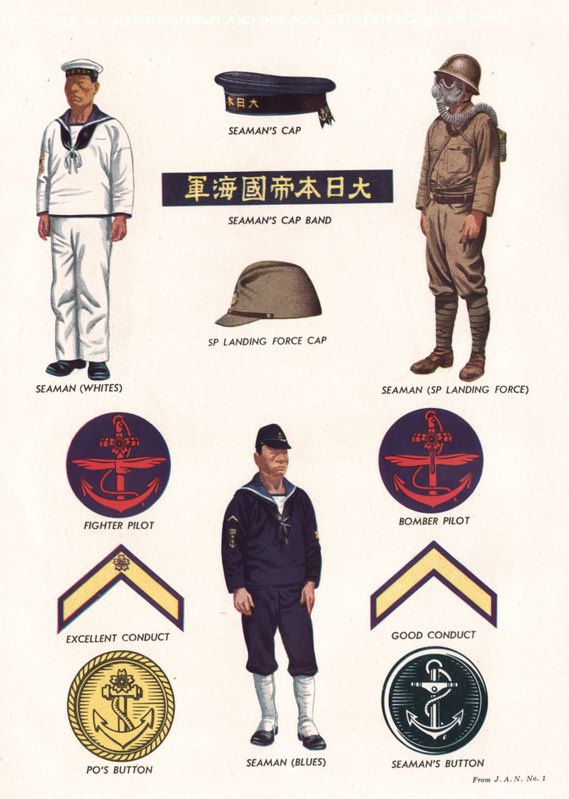


![]()

Petty Officer Hiroyoshi Nishizawa
Usually considered the top Japanese ace, Navy or Army. A definitive total will probably never be determined.
Nishizawa kept himself usually aloof, enjoying a detached but respected status as he rolled up an impressive victory tally through the Solomons campaign. He was eventually promoted to warrant officer in November 1943.
Like a few other high-scoring aces, Nishizawa met death in an unexpected manner in the Philippines. He was shot down while riding as a passenger in a bomber used to transport him to another base to ferry a Zero in late October 1944. In keeping with the established tradition, Nishizawa was posthumously promoted two ranks to lieutenant junior grade. His score has been variously given as 102, 103, and as high as 150.
However, the currently accepted total for him is 87.
Henry Sakaida, a well-known authority on Japanese pilots in World War II, wrote:
"No Japanese pilot ever scored more than 100 victories! In fact, Nishizawa entered combat in 1942 and his period of active duty was around 18 months. On the other hand, Lieutenant junior grade Tetsuo Iwamoto fought from 1938 until the end of the war. If there is a top Navy ace, it's him.
Iwamoto claimed 202 victories, many of which were against U.S. Marine Corps aircraft, including 142 at Rabaul. I don't believe his claims are accurate, but I don't believe Nishizawa's total of 87, either. (I might believe 30.) Among Iwamoto's claims were 48 Corsairs and 48 SBDs! His actual score might be around 80".
Several of Sho-ichi Sugita's kills--which are informally reckoned to total 70--were Marine aircraft. He was barely 19 when he first saw combat in the Solomons. (He had flown at Midway but saw little of the fighting.) Flying from Buin on the southern tip of Bougainville, he first scored on 1 December 1942, against a USAAF B-17.
Sugita was one of the six Zero escort pilots that watched as P-38s shot down Admiral Yamamoto's Betty on 18 April 1943. There was little they could do to alert the bombers carrying the admiral and his staff since their Zeros' primitive radios had been taken out to save weight.
The problem of keeping accurate records probably came from the directive issued in June 1943 by Tokyo forbidding the recording of individual records, the better to foster teamwork in the seemingly once-invincible Zero squadrons.
Prior to the directive, Japanese Zero pilots were the epitome of the hunter-pilots personified by the World War I German ace, Baron Manfred von Richthofen. The Japanese Navy pilots roamed where they wished and attacked when they wanted, assured in the superiority of their fighters.
Occasionally, discipline would disappear as flight leaders dove into Allied bomber formations, their wingmen hugging their tails as they attacked with their maneuverable Zeros, seemingly simulating their Samurai role models whose expertise with swords is legendary.
Most of the Japanese aces, and most of the rank-and-file pilots, were enlisted petty officers. In fact, no other combatant nation had so many enlisted fighter pilots. The U.S. Navy and Marine Corps had a relatively few enlisted pilots who flew in combat in World War II and for a short time in Korea. Britain and Germany had a considerable number of enlisted aviators without whose services they could not have maintained the momentum of their respective campaigns.
However, the Japanese officer corps was relatively small, and the number of those commissioned pilots serving as combat flight commanders was even smaller. Thus, the main task of fighting the growing Allied air threat in the Pacific fell to dedicated enlisted pilots, many of them barely out of their teens.
During a recent interview, Saburo Sakai shed light on the role of Japanese officer-pilots.
He said:
"They did fight, but generally, they were not very good because they were inexperienced. In my group, it would be the enlisted pilots that would first spot the enemy. The first one to see the enemy would lead and signal the others to follow. And the officer pilot would be back there, wondering where everyone went! In this sense, it was the enlisted pilots who led, not the officers"
Nishizawa died while flying as a passenger in a transport headed for the Philippines in October 1944. The transport was caught by American Navy Hellcats, and Lt(j.g.)Harold Newell shot it down.![]()







Type 14 Nambu Pistol
The standard Japanese pistol, the Nambu fired 8x22mm ammunition from an 8 round magazine. Production began in 1906 and continued through 1945. The cartridge used had low power compared to other handguns of the era but it gave the pistol high accuracy. The pistol was recoil operated with the bolt being a cylinder in the back of the pistol.
![]()

![]()
The Mitsubishi A6M Zero-Sen legendary status mirrored the fortunes of the rising sun, in which four years, the sun would finally set. For the Japanese and its former enemies, the A6M was the symbol of Japanese air power. The A6M fighter marked the beginning of a new epoch in naval aviation and was the first shipboard fighter capable of surpassing land-based aircraft.
With its tight turning radius, it was an extremely deadly weapon in a dogfight, and was famous for its ability to outmaneuver, Brewster F2A Buffaloes, Curtiss P-40s and Grumman F4F Wildcats. As early as 1937, Claire Chennault, the author of 'The Role of Defensive Pursuit,' warned the USAAF about the dangers of Japanese air power. Apparently his warnings were ignored, as the superiority of the A6M was a complete surprise to the American forces.
As leader of the Flying Tigers, Chennault constantly stressed to his pilots, 'Never try to turn with a Zero. Always get above the enemy and try to hit him with the first pass.'3 Because of the A6Ms exceptional range and performance, it was to bear the brunt of the action, of almost every military engagement in the Pacific, until the end of the war.
The Navy submitted specifications for a new Navy Fighter on 19 May, 1937, to supersede the Mitsubishi A5M, Navy Type 96 Carrier Fighter, which had just become operational. The requirements called for were:
1. Maximum speed of 270 kt @ 4,000 m.
2. Climbing speed of 3,000 m in 9 min 30 sec.
3. Endurance of 1.5 to 2 hours at normal rated power.
4. Endurance of 6 to 8 hours at economical speed with drop tanks.
5. Armament of two 20 mm cannon and two 7.7 mm machine guns.
6. Provisions for two 60 kg bombs.
7. Provision for full radio and direction finder.
8. Takeoff run less than 70 m with a 27 knot headwind.
9. Maneuverability at least equal to the A5M
| |
![]()
The "Zeke" or "Zero" to the Allies
The A6M possessed many shortcomings, which were only to be revealed six months later when a virtually intact specimen was obtained. On June 3, 1942, Flight Petty Officer Tadayoshi Koga left the flight deck of the carrier Ryujo in his Mitsubishi A6M2 Model 21 fighter as part of a task force assigned to attack Dutch Harbor in the Aleutian Islands.
His A6M2, which had been built in February, was on its first operational mission. On his way back to the Ryujo, Koga found that two bullets had punctured his fuel supply and he informed his flight commander that he intended to land on Akutan Island, designated as an emergency landing field. Koga did not make the landing field and instead made a forced landing in a marsh where the aircraft flipped over, in which he was killed, from a broken neck.
Five weeks later, a US Navy PBY Catalina, making a routine patrol, discovered the Japanese fighter upside down in the marsh. This single fighter was probably one of the greatest prizes of the Pacific war. Hardly damaged, it was shipped back to the USA where it was exhaustively tested. Information gathered during testing of the A6M2 prompted the American aircraft manufacturer Grumman, to lighten the Grumman F4F Hellcat, and install a larger engine on the Grumman F6F Hellcat.
Some Zeros were the first aircraft used intentionally as suicide attack planes. Modified Zeros assigned to Air Group 201 in the Philippines became the first Japanese aircraft used on planned suicide missions against American surface vessels. Air Group 201, assisted by volunteer pilots from Air Group 601 and other Navy units in the area, became the first Kamikaze (Divine Wind) suicide squadron in the Japanese Naval Air Force.
The outstanding successes gained by this form of attack led to the formation of other Kamikaze units, and the bomb-carrying Zeros became the prime suicide attack bombers of the Navy.
More Zero-Sens were produced than any other wartime Japanese aircraft. Mitsubishi alone produced 3,879 aircraft of this type, Nakajima built 6,215 which, together with the 844 trainer and floatplane variants produced by Sasebo, Hitachi and Nakajima, brought the grand total of A6M series aircraft to 10,938. The Zero-Sen possessed complete mastery in the air over the Pacific until the Battle of Midway in June 1942, the actual turning point of the Pacific War although recognized by only a few at the time.
The value of the fighter steadily declined and its lowest point was reached when it was selected to lead the Navy's Air Force in mass suicide, and the Japanese nation followed. The installation of the Kinsei engine brought Zero-Sen closer to Allied standards attained at that stage in the war, but the moment for decision had passed and, with it, victory for the Allies had become a foregone conclusion. The fighter that started the Pacific war was no longer able to fight it--nor was the nation that conceived it.
![]()



![]()

| Powerplant A6M2: | Powerplant A6M5: |
|---|---|
| One Nakajima NK1C Sakae 12, fourteen cyl., air-cooled, radial engine rated at 940 hp for takeoff and 950 hp @ 13,780 ft (4,200 m), driving a three-blade metal propeller. | One Nakajima NK1F Sakae 21, fourteen cyl., air-cooled, radial engine rated at 1,130 hp for takeoff and 980 hp @ 19,685 ft (6,000 m), driving a three-blade metal propeller. |
| Armament: | |
| Two forward-firing 7.7 mm Type 97 machine-guns in the upper fuselage and two wing-mounted 20 mm Type 99 cannon with two external 132 lb (60 kg) bombs. | |





















/idata%2F0396584%2FKOREA%2F71910_korea_MIA1_800.JPG)
/idata%2F0396584%2FU.S.ARMY-POST-WW2%2Fphot4901a.jpg)
/idata%2F0396584%2FDRAWINGS-UNIFORMS-WW2%2F30-451-09b-2.jpg)
/idata%2F0396584%2FP-40%2F44FS000.jpg)
/idata%2F0396584%2FGERMAN-U-BOAT%2FBundesarchiv_Bild_101II-MW-1031-28-_Lorient-_U-31.jpg)
/idata%2F0396584%2FSOVIET-ARMY-WW2%2F1.jpg)




